Daily dispatches from Locarno
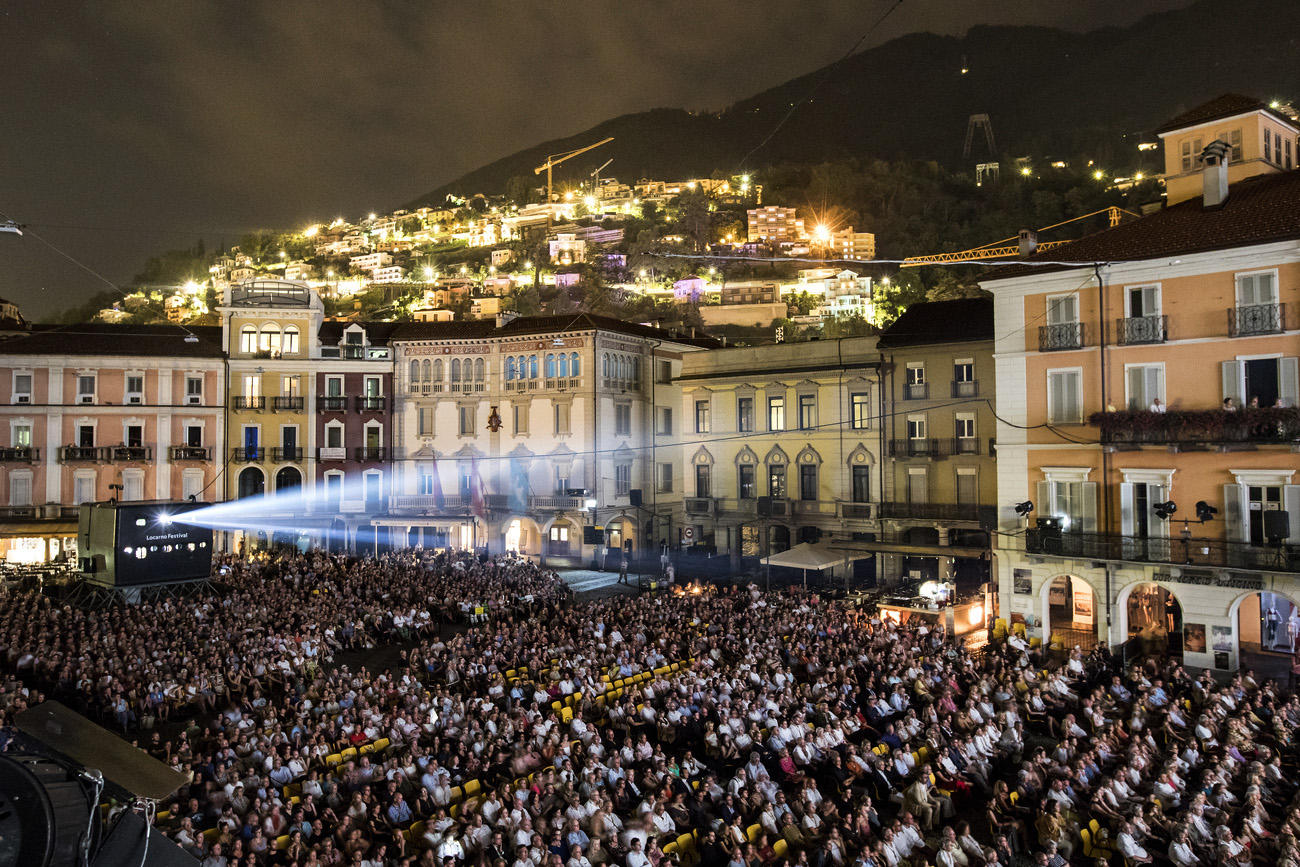
EPILOGUE
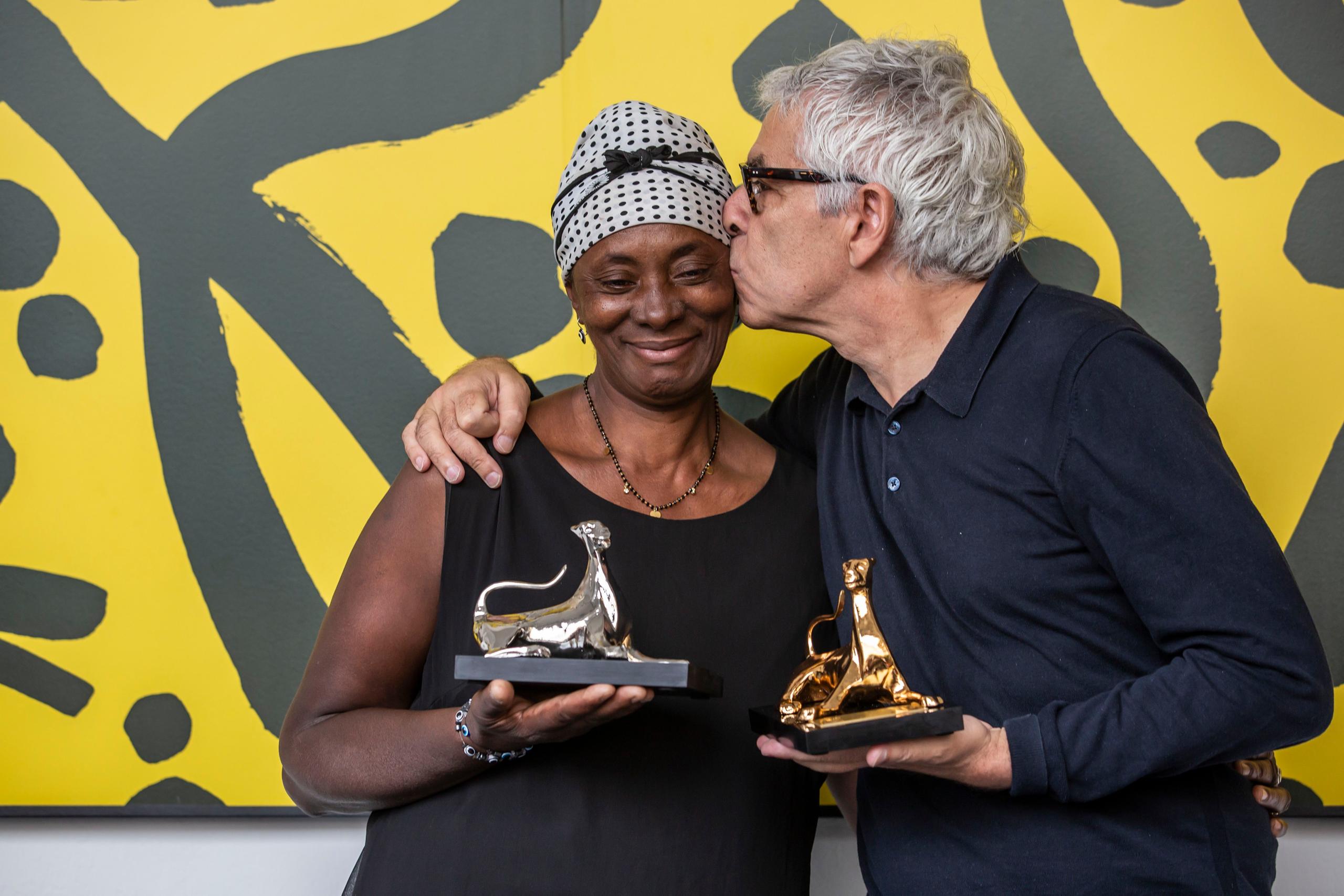
The Pardo goes to Portugal and Brazil
Chiaroscuro’s guess was right: the Pardo d’Oro goes to Portugal, to Pedro Costa’s “Vitalina Varela”, whose main protagonist, Vitalina Varela herself, took the prize for best actress. The lusophones still carried another main prize, best male actor for Regis Myrupu in the Brazilian “A Febre” (The Fever”).
Chances to see “Vitalina Varela” in a grand theater near your house, instead of the smaller arthouse cinemas, are much improved now, and this is good news, for the cinematography is a real artwork in its own right. As we noted some days ago, the display of lights and shadows through an immobile camera makes one think that some Renaissance master signed the photography.
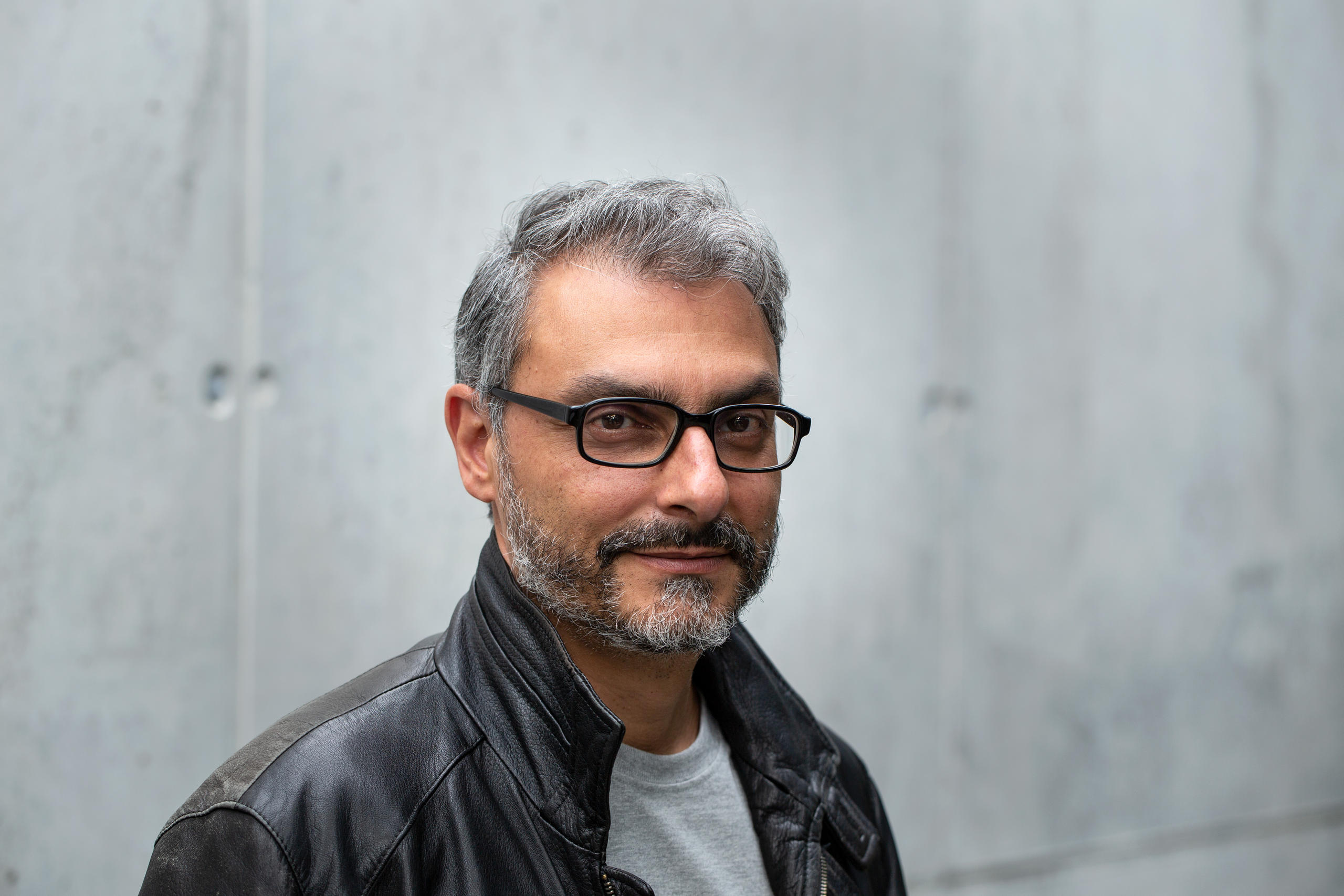
There is no mannerism (à la Tarantino, for instance) in Pedro Costa’s film. And it’s neither an usual product of what we call “photocracy”, the manipulation of image so that it looks like a perfect, photoshopped advertising piece. It is photography at the service of the narrative, it conveys sensations, atmosphere and moods.
Chiaroscuro met Regis Myrupu, the best actor, right after the first screening of “A Febre”, last week, when he told that to be in a grand film festival was something he never even dared dream of. Imagine winning the main prize now… especially because Myrupu is not a professional actor. Back in Manaus, capital of the Brazilian state Amazonas, Myrupu worked as cultural promoter of his nation’s rituals before moving to Italy a year ago (he’s married to an Italian with whom he recently had his first son).

Concorso internazionale
Pardo d’oro (Golden Leopard)
VITALINA VARELAExternal link by Pedro Costa, Portugal
Special Jury Prize
PA-GOExternal link (Height of the Wave) by Park Jung-bum, South Korea
Leopard for Best Direction
Damien Manivel for LES ENFANTS D’ISADORAExternal link, France/South Korea
Leopard for Best Actress
Vitalina Varela for VITALINA VARELAExternal link by Pedro Costa, Portugal
Leopard for Best Actor
Regis Myrupu for A FEBREExternal link by Maya Da-Rin, Brazil/France/Germany
Cineasti del presente Golden Leopard
BAAMUM NAFI (Nafi’s Father)External link by Mamadou Dia, Senegal
Best Emerging Director Award
143 RUE DU DÉSERTExternal link by Hassen Ferhani, Algeria/France/Qatar
Special Jury Prize
IVANA CEA GROAZNICA (Ivana the Terrible)External link by Ivana Mladenović, Romania/Serbia
Moving Ahead Award (Experimental film)
THE GIVERNY DOCUMENT (SINGLE CHANNEL)External link by Ja’Tovia M. Gary, USA/France
Pardino d’oro for the best international short film – Premio SRG SSR
SIYAH GÜNEŞ (Black Sun) External linkby Arda Çiltepe, Turkey/Germany
(Locarno Short Film Nominee for The European Film Awards 2019)
Pardino d’argento SRG SSR for the Pardi di domani International competition
UMBILICALExternal link by Danski Tang, USA
Pardi di domani Best Direction Prize – PIANIFICA
OTPUSK (Leave of Absence)External link by Anton Sazonov, Russia
Pardino d’oro for the best Swiss short film – Premio Swiss Life
MAMA ROSAExternal link by Dejan Barac, Switzerland
DAY 10
Is it true that the festival’s almost over? Chiaroscuro wonders how the rest of the planet has been doing lately, outside of this movie bubble. Better leave it for Sunday. Until then, the show goes on. True that John Waters have stolen the scene today, and that seems such a natural thing for him. The perfect communicator, a master of the hilarious, we wonder how is he under closed doors doing business. That’s the question we didn’t ask. But in a brief interview in the Hotel Belvedere in Locarno, we could talk sex and Switzerland (quite a brief subject if put together).
About Switzerland: Waters mentions Matthias (This) Brunner, an important personality of the Swiss movie scene for decades, close friend of Waters since Pink Flamingo times (1972). Brunner is still active in the film scene, but in the last years he has devoted himself to his art collection, mainly of pop art together with a big selection of Waters’ artworks, and his own art – by the way, next Sunday, August 25th, the MASI Museum in Lugano opens an exhibition of Brunner’s “The Magic World of the Mountains in the Films of Daniel Schmid”. Chiaroscuro recommends.
The late director Douglas Sirk, master of melodrama of the 1950s and 1960s, is one of the many shared passions of Waters and his friend from Zurich. After his death, Sirk gave his whole archive to Brunner to keep, including manuscript poems in German, and that’s also how Chiaroscuro got to know him. The archive is now in the Cinemathèque Suisse, presently run by Frédéric Maire, former artistic director of Locarno Festival (2005 – 2009).
Maire joined Laurine Chiarini, from the festival’s Critics Academy, on a visit to the ruins of the Grand Hotel Locarno, birthplace of the festival and its main venue apart from the Piazza Grande, until closing its doors for good in 2005. You can have an appetizer in the video below, and get the full feature, including historic photos of the grand old times, in the special dossier that we will publish on Sunday.
DAY 9
John’s in town!
Yes, at last: the festival’s guest of honour this year, John Waters, graced the audience with his presence today in a special session of his last feature “A Dirty Shame” (2004). Chiaroscuro is slated to meet him tomorrow so watch this space. In the meantime, voilà a short appetiser:
Identity issues in Spanish
Chiaroscuro has given a lot of space to the Portuguese contestants for the Pardo d’Oro, but the Latin invasion has further reinforcements: Two Spanish-speaking films are also in the running.
First up is “Longa Noite” – and don’t be fooled by the title spelled in Portuguese, for it is a film from Galicia, a region on the border of Portugal and Spain that speaks a dialect that is a mix of both languages. The second one, “Hogar”, also has identity issues: an Italian-Argentinian production by an Italian-Argentinian director. As our correspondent Sergio Ferrari reports, the film has provoked strong reactions.
“In Latin America, the press reinforces its Argentinian identity, as much as the decisive role of Argentinian independent producers and the National Institute of Cinema and Visual Arts (INCAA) guarantee the existence of the film. Meanwhile, the Italian press considers it the work of a fellow-countrywoman born in Bolzano in 1975.”
Director Maura Delpero responds that she simply feels at home in both places, but what the film actually conveys is “the miracle of international co-productions”.
“Hogar” presents the lives of two teenage single mothers, Luciana (Agustina Malale) and Fatima (Denise Carrizo), who reside in a religious centre in Buenos Aires destined to welcome women in desperate situations. Both of them, with dazzling performances, are first-time non-professional actors. By the way, non-professional actors are a fixture of many of the films in competition.
You can read the full article with an interview with the director here (in Spanish).
“Longa Noite”, treads a Spanish minefield bringing up the memory of the Civil War (1936-39), which hasn’t been entirely purged from the country. In some recent provincial elections in Spain, the extreme-right marked a sudden resurgence, demonising the usual suspects (immigrants, the European Union, etc.) and hailing the regime of the generalissimo Francisco Franco, who reigned the country until his death in 1975.
Ferrari’s article can be accessed here (in Spanish).
Speed Critic #2
And, last but not least, some more Speed Critic for the day, with Wilfred Okiche (Nigeria) versus Dario Pollice (Switzerland), sparring over the French film “Notre Dame”.
DAY 8
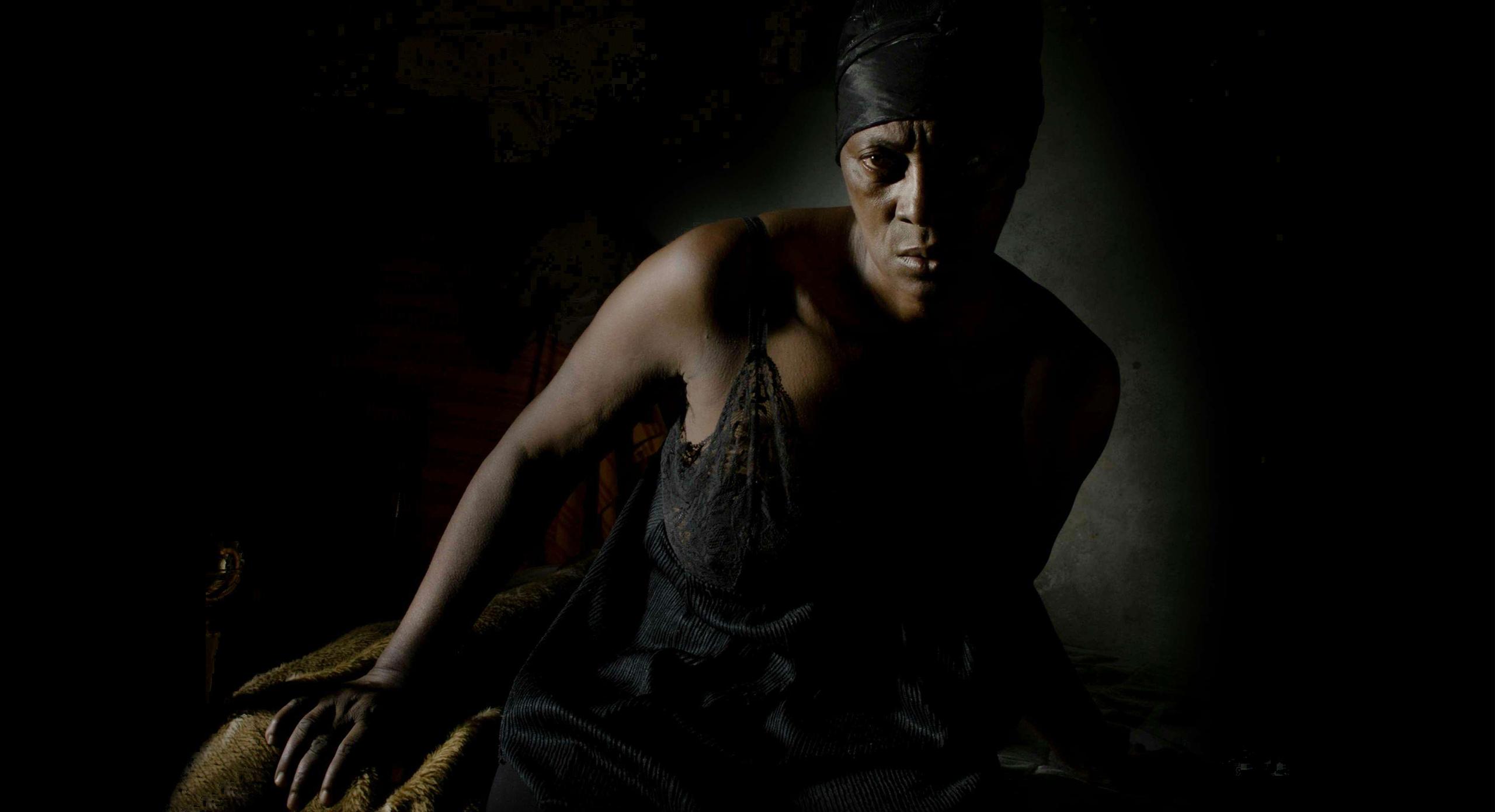
Shadowplay
Chiaroscuro is feeling enormously flattered after seeing Pedro Costa’s “Vitalina Varela”, totally filmed in… chiaroscuro technique. The Portuguese film-maker has created one of the most beautiful films of the festival, albeit one that is definitely not made for a big audience. It is an art film to the bones, with a narrative made of light and ellipses.
The camera is always static; what moves are the lights and shadows, and every single scene is carefully crafted to look like a painting. I wouldn’t be surprised if Caravaggio himself was credited as director of photography – but the artist behind the camera here is Leonardo Simões. The public, and critics, left the session in deeply polarised camps of love and hate.
Fresh Blood
During the festival, as mentioned before, swissinfo.ch has been working with the Critics Academy.External link Each of the young critics has been working on particular projects of their own. Here’s one example: a gallery of impressions from Locarno.
“In Between Frames”, by Linda Kersnerova
Sparring partners
Days have been hectic for everyone, but we also try to have as much fun as we can. “Speed Critic” is a sort of game we devised with the Critics Academy this year, pitching two critics with a chess clock discussing a film, or theme. Check it out:
DAY 7
Within and without Switzerland
As we look at the Swiss selection of films in Locarno this year, the first impression is that Switzerland is probably one of the most culturally diverse countries in the world.
The Swiss candidate for the main prize of the festival, the Pardo d’Oro, is called “O Fim do Mundo” – Portuguese for “the end of the world” – and is all spoken in the creole language of Cabo Verde and Madeira. More on that soon – Chiaroscuro is meeting director Basil da Cunha this afternoon.
In Cineasti del Presente, the competition for authors in their first or second feature, Switzerland has two other films, Klaudia Reynicke’s “Love me Tender” and “L’Ile aux Oiseaux” (Birds island), by Sergio da Costa and Maya Kosa.
Reynicke is from Ticino and the others come from the French-speaking part of the country. The German Swiss, however, may not be in the main competitions but had their premieres attended by raving crowds of the festival. “Die Fruchtbaren Jahren sind Vorbei” (The Fruitful Years are Over), by Zurich-born Natascha Beller, enjoyed the privilege of a Piazza Grande open-air session.
Two other filmmakers hailing from Zurich also made a great impression at Locarno, with sold out sessions in the largest cinemas: David Vogel’s “Shalom Allah” and Samir’s “Baghdad in my Shadow”. (The crowd reception for Samir was incredible).
With no privilege, among equals
It’s been a jolly good ride for Swiss films in Locarno this year, although artistic director Lili Hinstin had already announced that she would not give privilege to films on her programme just because they are Swiss. What we see then is a big roaster of Swiss productions here (21 co-produced by the Swiss Broadcasting Corporation, the parent company of swissinfo.ch), spread out over the festival’s several sections.
“Shalom Allah” is a pick in the “Semaine de la Critique” (critic’s week), while Samir’s film is out of competition. Apart from their position in the festival, Chiaroscuro was particularly curious about these two films that are diametrically different but have a lot of things in common, besides the same producer, Joel Jent from production house Dchoint Ventschr.
Samir has been one of the most representative voices on the Zurich film scene for decades now, an accomplished film-maker, producer and cultural agitator, who is bringing a movie to Locarno for the seventh time. Born in Baghdad of an Iraqi father and Swiss mother, he came as a kid to Switzerland and never had a formal education in film.
David Vogel, on the other hand, is a Zurich-based radio journalist who has just finished his first feature: a documentary about Swiss converts to Islam that turns into a soul-searching trip of his own Jewish background.
“Shalom Allah” tells much more about Swiss culture and mentality than about Islam. It exposes a fault line in Swiss society, in which the sense of belonging to the larger Swiss society is a chimera for a significant part of the population that either does not fit the strict moral codes (usually very discreetly understated) or who have “alien” or mixed backgrounds.
Old taboos still linger in the Swiss cultural mores, and the sense of non-conformity is what also drives the characters in Samir’s movie, even though “Baghdad in my Shadow” has nothing to do with Switzerland.
The story is set in London, focusing on a group of Iraqi émigrés of different ages, exposing the generational breakdown that came to define the Middle East’s political pitfalls in the 21st century.
They ranged from the nationalist, Marxist, communist movements that dominated the freedom struggle in the region in the second half of the 20th century to a newer generation divided in two radically opposed camps, namely the Islamist, fundamentalist, Wahabi, Salafist, etc., and the liberal, westernised, mostly non-ideological citizens.
The tragedy of the latter is to be the ones who usually start the calls for revolution or reform, and eventually are crushed either by the establishment dictatorial forces, or simply overrun by the Islamists.
The Swiss Arab and the Swiss Jew: mutual identity
There is a lot to be said about these two movies together, and that’s why Chiaroscuro invited both Samir and David Vogel for a conversation in Locarno, in which we discussed the burning issues of identity, diaspora, how it feels to be an outsider, religion, and much more. (Disclaimer: Chiaroscuro author Eduardo Simantob is a Swiss citizen of Arab, Jewish and Brazilian origin). The talk could have extended for hours and hours, but we all are rushing around on tight schedules. You can get an idea of the conversation in the short version below, or watch the whole thing hereExternal link.
DAY 6
Party animals at the festival
Torrential rains over the Piazza Grande haven’t stopped Locarno’s roaming army of zombie cinephiles. Sleep deprivation is the most discussed topic among those in attendance, after films, of course.
The nights are long and days start very early. Parties are held across the city; festivals wouldn’t be festivals without parties. But I’m not talking about wild binges and orgies involving the stars of the silver screen.
Festivals are also markets, and for many – if not all – people in the film industry parties are about business. Parties are work. If you are a film-maker trying to get in touch with a TV commissioning editor, a powerful producer or anyone whose pockets or chutzpah open doors and create happy endings, you have to keep hold of that first glass of wine all night long.
You must be alert, smart and focused. True, you may need a second or third glass of Dutch courage for that, and to make that important first impression. But the odds will always be against you. It’s easy to make a bad impression, even sober. It’s no joke, parties are hard work.
Yes, parties abound. However, Chiaroscuro cannot attest which ones go out of bounds. Unfortunately, poor journalists are not invited to the fun. In this respect, we have an even worse image than politicians, lawyers and accountants.
Lusitania Rules
Never in the history of Locarno has a Portuguese language film had such a high chance of winning the Pardo D’oro, the main prize of the international competition. Out of 17 films selected, two are pure-bred Portuguese works: Pedro Costa’s “Vitalina Varela” and João Nicolau’s “Technoboss”. “O Fim do Mundo” (The end of the world), a Swiss film by the Geneva film-maker of Portuguese origin Basil da Cunha, is also on the list. And there is a fourth, “A Febre” (The fever) by the Brazilian Maya Da-Rin, although this film is spoken mostly in the indigenous Tukano language of the Amazon (see post below).
Portuguese films are also present in the other competitions, such as Cineasti del Presente, for directors on their first or second feature (another Swiss production by a Portuguese-Swiss duo, Sergio da Costa and Maya Kosa), and spread all over the different film sections. This is a reflection of how Portugal has been Europe’s darling for quite a few years now, in many aspects.
First, the economy. During the last major crisis in 2012-13, the government decided to do everything the IMF, the European Central Bank, the World Bank and the British magazine The Economist told it not to do. Instead of austerity, cuts to public expenditure and wild privatisation, it decided to invest in health, education and transport. Basically, they invested in the public sector. The Portuguese did not become rich, but the country’s infrastructure is running so well that it has attracted foreigners, who have been buying real estate, opening businesses, as well as a growing number of tourists. Portugal’s beautiful cities have been gentrified, and the country has climbed the ranks of European and world football.
Portuguese cinema did not sink into the depths of the Tejo River, as director Miguel Gomes told me some years ago when launching his film “Tabu” in Zurich. It is not sailing high on money, though. Directors João Nicolau, of “Technoboss”, and José Filipe Costa, of “Prazer, Camaradas!” (out of competition), lamented that every film we see is the result of sweat and blood, the fruits of invention, as every film is “subfinanced” (the Portuguese all use this word, which has become almost as catchy as “sleep deprivation”).
“Everybody has to lower their budgets constantly during production, and our budgets are not pipe dreams,” says Lourenço. He adds that it forces creators and producers to incur uncertain financial and creative risks. Frequently, producers and directors must put the money upfront with no certainty of any returns. Projects can be also creatively compromised when scripts or actors, for example, must be changed to attend the demands of funding partners, like TV stations or international distributors.
Considering that Portugal hardly produces more than a dozen features a year, it is a remarkable feat to be so present in international festivals. Among the Portuguese film candidates at Locarno this year, only “A Febre” and “Technoboss” have been shown so far, and both have been praised by our fellow critics. While “The Fever” is a delicate fiction that delves into a brutal reality, “Technoboss” is an endearing musical, led by Miguel Lobo Antunes, who is the brother of one of Portugal’s most outstanding living writers, Antonio Lobo Antunes. It is hard to believe that Miguel is not a professional actor. This is his first experience in acting – he is actually a lawyer who even worked in the Constitutional Court, but has been very active lately as a cultural programmer.
This is Portugal at its best, but none of the creators sound too confident. There is a saying in Portugal that “it’s our fate to swim and swim, only to end up dying on the beach”. These words fit sad fado music perfectly, but, as the films in Locarno show so well, these days Portugal is swinging to the tunes of hip-hop, metal and pop. Coragem, companheiros, be brave.
Day 5
Quentin Tarantino is on a cathartic crusade
The ultra-hype pulp-cult American director had his latest work, “Once Upon a Time… in Hollywood”, screened in the open-air Piazza Grande last night. It is a sort of re-premiere, for although the film was first shown at the last Cannes Film Festival, Tarantino decided to make some changes afterwards, so what we saw is the definitive director’s cut.
Tickets sold out days ago, and there were thousands available. Chiaroscuro, however, had the privilege of watching it in the comfy air-conditioned Palacinema, one of the best theatres of Locarno, in a closed session for the press (one of the very few perks, if there are any, of this ungrateful profession of journalist) – and it was really fun. And fun seems to be what most of the public was expecting.
Yeah, Charlie Manson looks great in the picture. However, for serious film critics like us (ahem), the undying question since Tarantino’s first major cinematic breakthrough, “Reservoir Dogs” (1992), is: how seriously can we take Quentin Tarantino?
In guise of a long critical dissertation, Chiaroscuro must admit that I gave up getting mad at Tarantino’s mannerisms a long time ago. My grandma always told me to accept people as they are, and the advice sticks here, since nobody will ever change Tarantino’s ways. He’s already too old for that.
But it is good to see that Tarantino did not lose one of his most striking super-powers, namely his infallible soundtrack. (Disclaimer: Chiaroscuro is an unabashed worshipper of 1960s music, and Once Upon a Time… in Hollywood is set in Los Angeles, 1969, i.e., my critical capacities may be impaired by emotional undercurrents beyond my control).
In any case, Tarantino’s choice of songs, fished from the deepest oceans of pop-rock-soul-surf-blues-swing, can turn virtually unknown, forgotten pearls of yore into instant classics of the popular canon. Let’s stick only to a couple of openings, where the very first chords are meant to thrill from toes to guts: Little Green Bag in Reservoir Dogs; Dick Dale’s Miserlou in Pulp Fiction, and now Treat Her Right, by Roy Head & The Traits, 1965.
Still we haven’t answered our question here. Can we call Tarantino an author in his own right? Some say that he doesn’t create anything; instead, all he does is recycle types, archetypes, and clichés, wrap them in citations, and bathe them in blood.
But Chiaroscuro has nothing against recycling, especially waste. In the case of Mr Tarantino, though, I see another kind of operation, where his reenactment of history – slavery, Second World War, the 1960s, Blaxploitation 1970s – is both ultra-realist and cartoonish at the same time: a clear statement that, within this universe, he can do whatever he pleases.
And this is exactly what he has done with Inglourious Basterds, Django Unchained, and now with Once Upon a Time. In the first, Tarantino made his own justice to Adolf Hitler; in the second he avenged slavery; and now he kicks ass on the Manson family, responsible for a crime still more hideous than the assassination of Sharon Tate, her baby and friends: Charles Manson murdered the Sixties (an excellent title for a bookExternal link).
Catharsis – the process of providing relief from strong or repressed emotions – is Tarantino’s credo, on a pop crusade to avenge historical misdeeds in our collective imagination. And this is serious… seriously fun.
Some last remarks: Chiaroscuro is no fan at all of Leonardo DiCaprio but has to admit that this is maybe his best performance ever. If it’s not yet clear whether we can take Tarantino seriously or not, I am afraid we can call DiCaprio a serious actor at last (well, the boy’s been trying hard for quite some time now). Brad Pitt, on the other hand, is at his best when he doesn’t take himself seriously at all.
Day 4
Sex and the working class
Hollywood doesn’t do sex any more (for many reasons, as perfectly discussed in this Washington Post articleExternal link). And the working-class hero seems to have all but disappeared from the collective imagination of the 21st century.
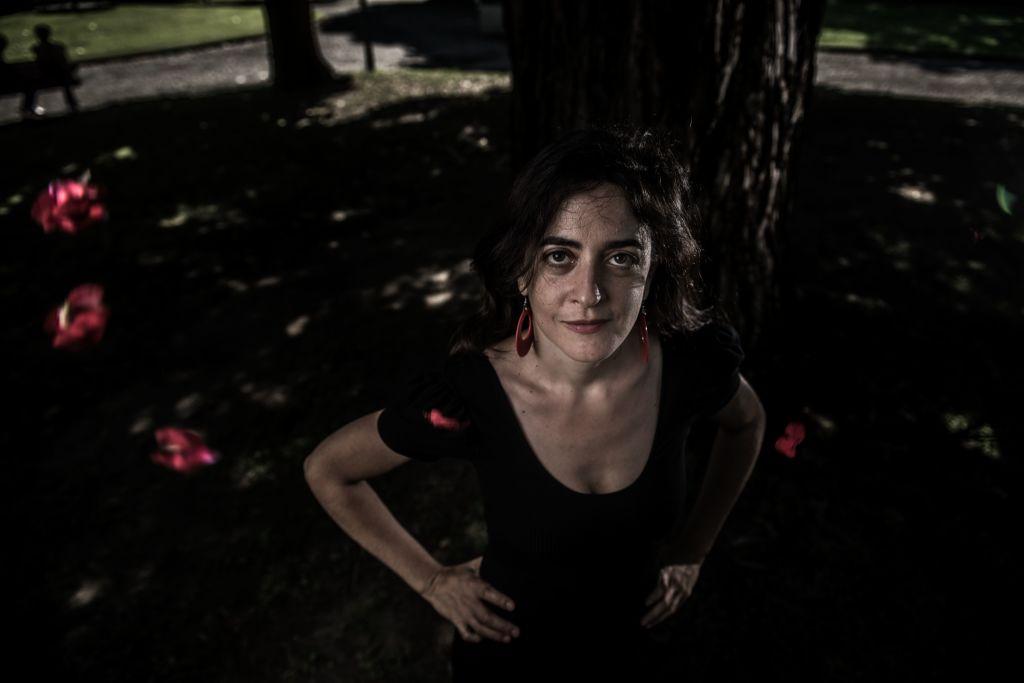
Sex and the class struggle, two of the most elementary motors of some of the best 20th century cinema, in large part have been relegated to the documentary field, which is still important to keep our social conscience alert to increasing inequality on a global scale. But in the fiction universe, where imagination should rule, the working class as such is a ghost of its (in)glorious past. And the sex… well, the British magazine Literary ReviewExternal link created in 1993 the annual Bad Sex in Fiction AwardsExternal link for authors who depict the worst sex scenes in a novel. The movie industry should be thankful that nobody has yet invented a similar prize for films. There would be just too many candidates.
However, and in tune with a cliché older than films, here come the French to the rescue. Frank, the main character in “Douze Mille” (Twelve Thousand), the first feature by Nadège Trebal, has a dream of social ascension more in tune with the 21st century.
Frank is no working-class hero, he is much below that strata: a typical lumpen-proletarian, as Karl Marx would call him, or, in today’s language, a member of the Precariat.External link For him, hitting a job as tank-cleaner in a chemical plant, the lowest of the lowest positions in the labour pyramid, is his horizon of aspiration. At least, he could earn more than his wife Marussia gets from social security for their four kids.
As for the sex, Frank and Marussia have it sooo good. I’m trying hard to remember when was the last time I saw a married couple (with kids) with such an active, gratifying sex life… in the movies, I mean, for in real life that’s what’s marriage is all about, right?
When Frank is kicked out of the used car-parts scheme from which he managed to make a buck, he starts to fear that Marussia may lose her desire and eventually dump him. “You can’t talk about sex without talking about money”, said Trebal to Chiaroscuro. “And I wanted to talk about love, but in the case of Frank, it’s about amour propre (self-love), and how money interferes in sexuality.”
“Sex is the last resort of the poor, and of everybody in fact”, she adds. “The intimacy that one can share with someone else is the most precious thing in life, and I wanted to show that even these down-and-out people, they possess wealth, a carnal one. But this treasure must be nourished by the conditions of life, by money, and the same money that helps nourish this intimacy can also bring it to an abyss. So, love and sexuality suddenly are ruled by the language of the economy. Sex is transaction, a relation of force and power.”
And as we talk about the economy, rising inequality and the crumbling of the middle class, Trebal asserts: “I’m interested in the class struggle, the exploitation of men, this savage process of de-industrialization. And I think it’s a pity the disappearance of the working class.”
“I meet these people, ordinary people, and they were all heroes, they are full of fiction. I mean, faced to a violent, crushing reality, I see this ability of reinvention of these people to survive, even when the relation of forces is not in their favour.”
Trebal says that she doesn’t want to tell a story of crumbling lives, of defeat, but, through Frank, “I want to show how far one is supposed to go to take part in society, to belong somewhere, for the sake of his or her own self-respect. I don’t want to show people satisfied with their condition at the margins, but the ones who will make whatever is necessary to buy their work.”
Trebal’s perception of the working class may strike a chord with the cinema of Ken Loach, maybe the last living true socialist in film, “but Loach is not so frontal when dealing with sex”, remarks Trebal. But she admits that the Brit is an important reference, as much as Jean-Luc Godard of “Vivre sa VieExternal link” (in her words, the film that most relates to her work).
In the present film world, though, doesn’t she feel alone, exploring these themes that nobody seems to care about any more?
“Not at all”, she says, almost triumphant. “I am in good company with [Pier Paolo] Pasolini, [Rainer Werner] Fassbinder… I see their films and I tell myself, it doesn’t matter the epoch, there are still films that inspire.”
DAY 3
Under the Sign of… John Waters
How scary can life in an upper middle-class American suburb be? According to Jocelyn DeBoerExternal link and Dawn LuebbeExternal link, authors and directors of “Greener Grass”, quite disturbing. The two authors take exaggeration to its limits, from the very first scene when Jill, housewife-cum-helicopter-mother, gives her baby to her friend Lisa as a gift. The act is done as if it’s natural, and Lisa takes the baby, changes her name from Madison to Paige and life goes on. No more spoilers here, but the more absurd the story becomes, moral/ethical issues are not simply turned upside down but get completely disfigured.
Sick. Freakish. Disgusting, almost gory – all photographed in an exaggerated palette of pastel colours so typical of marshmallowed American suburbia. If there is a point in all this nonsense aiming to the ridiculous extremes, it is probably a critique of the normalization of immoral rants in the heart of the American psyche and politics, starting with the almost sacred office of the US President, desacralised by Donald Trump (but he is not alone). All kinds of prejudices suddenly become normal and usual currency in the public debate, the horror is just a matter of point of view.
DeBoer and Luebbe are being hailed as a direct offspring of the camp ethics and aesthetics that John Waters so well perfected in his impeccable career, from underground anti-bourgeois shocker to enfant terrible in mature age. By the way, Waters hates the term “camp”. But his films transit through different levels of hilarity – at their best, they make you laugh with stomach cramps, at their worst they are simply funny. The problem of “Greener Grass” is that the best laugh it provoked was a nervous, tense one, almost forced – very much in tune with the artificial emotions exaggerated on the screen. Maybe that was the intention, épater les bourgeois (old modernist credo: shock the bourgeois). To judge it as a good or bad movie depends then on how disturbed you leave the theatre – the more, the better.
“Greener Grass” already collected a fair amount of critical praise. For the magazine Variety, “it’s basically the best ‘Saturday Night Live’ movie that ‘Saturday Night Live’ never made”. The feature film now touring the world was originally a short television movie, that you can also watch online (but beware of spoilers, though Chiaroscuro appreciated more the spirit and the acting in the short):
Introducing… the Critics Academy
Day 2
Under the sign of destruction
After days of torrential rains, the sun finally came out in Locarno. But two of the main films in the international competition set Chiaroscuro’s mood to dark grey.
The first movie was “During Revolution”, produced by the Abounaddra Collective (Syria), an ongoing project which took place from 2011 until 2017, shot by four cameramen. A work-in-progress cut had been already shown at the documenta 14 art exhibition in Kassel, Germany. The final version, edited by the Syrian-born Swedish director Maya al-Khoury, recreates a journal of the Syrian war, from the first euphoric, peaceful street demonstrations to the complete destruction of the social fabric, the cities and of all hope.
Homes destroyed, the anonymous dead, the surviving children forever traumatized living in refugee camps with broken families; we all know these images so well. We have seen them over the years in different media and they have made us uncomfortably numb. Instead, Khoury focuses on a few real-life characters. The director follows the lives of middle class citizens who meet in living rooms to debate and devise the future democratic system after the fall of the dictatorial regime. The same citizens are later transformed into soldiers but with no proper training, battling powerful enemies like government armies and militias, Russian air power and the Islamic State.
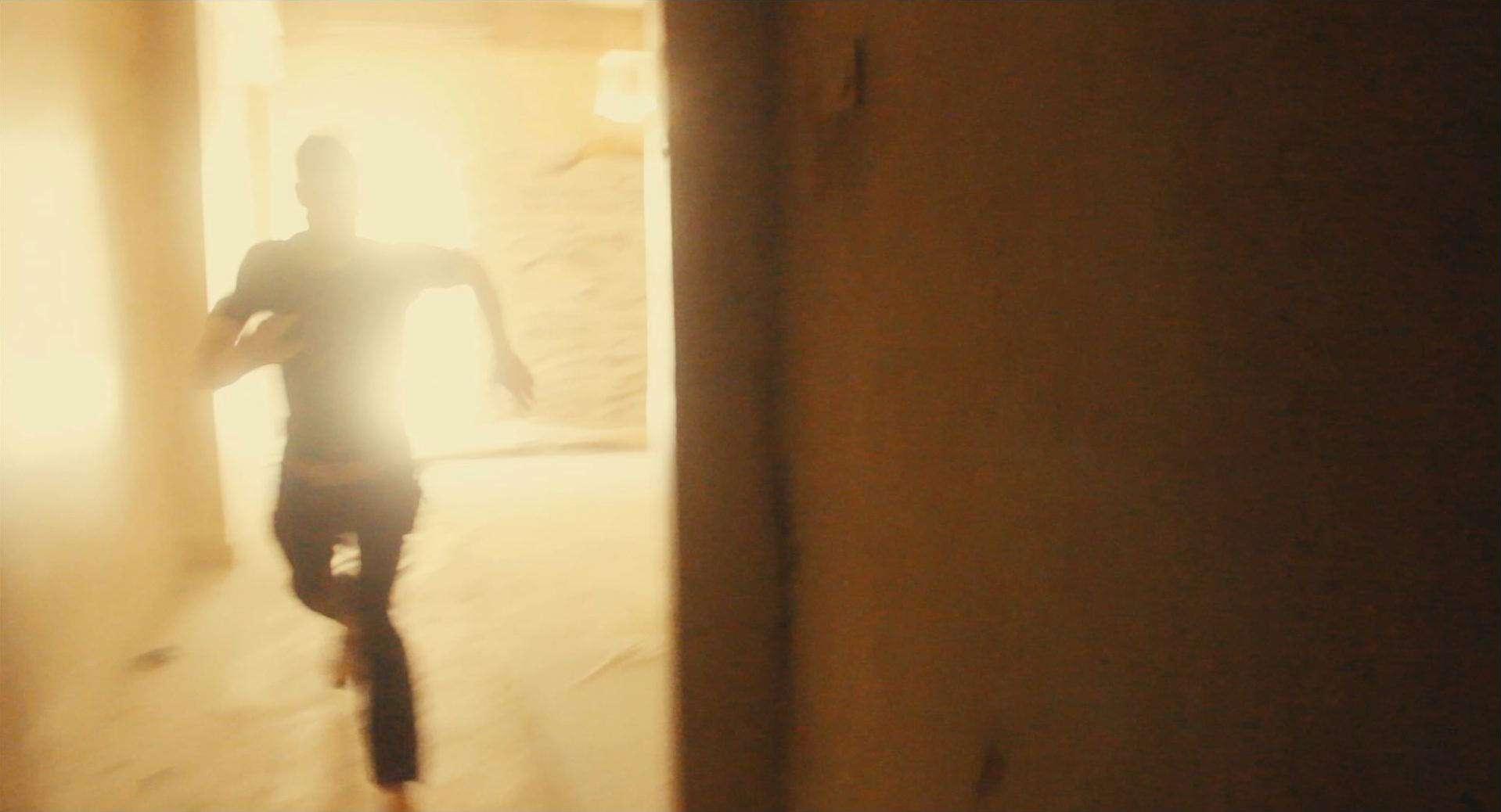
The final chapter of this film, though, is being played out right now far away from the neutral comfort of Switzerland. It was disheartening, to say the least, to leave the cinema and be faced with the fresh news that the last bastion of the Syrian rebels, Idlib, is under a new, and probable, final offensive by the Bashar al-Assad government.
Under the sign of genocide
So, enough of Syria – Chiaroscuro then moved on to the Amazon with the Brazilian feature “The Fever” (A Febre), by another Maya – Maya Da-Rin, from Rio de Janeiro. This time we were supposed to be in more peaceful territory, for the film is a fiction and Brazil is a peaceful country, is it not? Só que não (“but just no”, in free translation of the Brazilian expression).
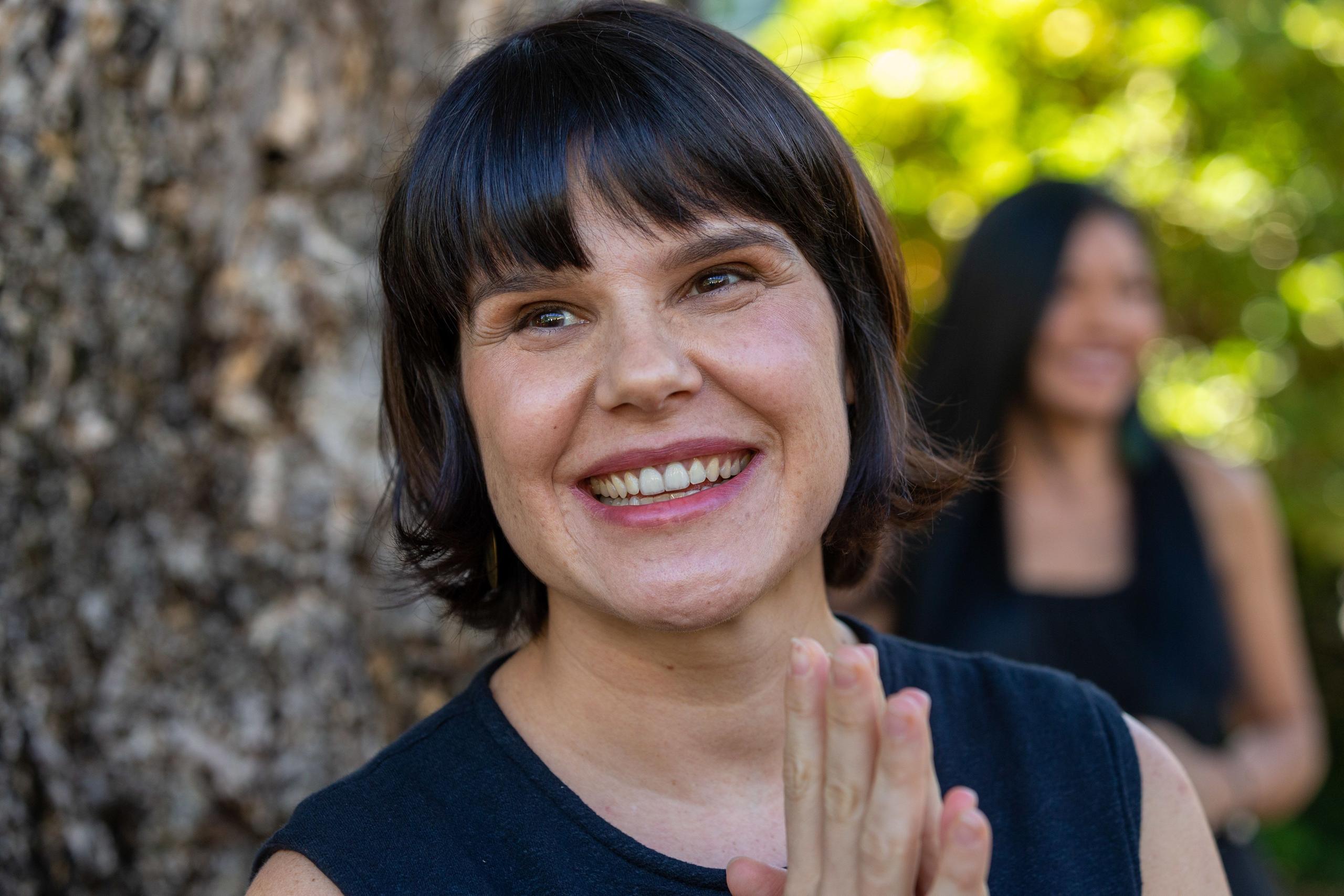
The director made a short presentation to the packed FEVI theatre before the screening. She thanked the Brazilian Federal Audiovisual Agency, while lamenting the fact that from now on films like hers would rarely be made any more. The rightwing government of Jair Bolsonaro has already threatened the agency with expedient demise, and its transformation into a controlling body that should pay special care to patriotic themes and good Christian values. A not very discreet euphemism for censorship.
Tragic as it sounds, the current plight of the indigenous peoples is worse. The federal agencies responsible for indigenous issues, such as land demarcation, natural preservation, and cultural fostering, are being emptied and staff are being removed or fired. Their work is being transferred to other bodies, such as the Ministry of Agriculture, which is dominated by the agrobusiness.
This is just some of the background necessary to understand the subtle messages present in Da-Rin’s film, which took seven years to be completed. The plot is almost plotless: “Justino, a 45-year-old member of the Desana people, is a security guard at the Manaus harbour. As his daughter prepares to leave for Brasilia to study medicine, Justino comes down with a mysterious fever”. The plot is the least important element, however. It is a film that uses cinematic powers at their delicate best. For a start, the sound design – including noises of rain, wind, harbour cranes and street markets – is carefully crafted to transport the viewer into the screen.
Parentheses: the last time a major Brazilian film had a premiere in Locarno was in 2012 with Kleber Mendonça Filho’s “O Som ao Redor” (Neighbouring Sounds), in which, as the title suggests, the sound plays a decisive role in the construction of drama. Mendonça told me after the session, that he was thrilled to listen to his own sound design with such perfection for the first time, in the Locarno theatre. His latest film, “Bacurau”, won the Jury Prize at Cannes this year, as well as the ire of Jair Bolsonaro for taking advantage of the film’s international exposure to denounce the Brazilian government.
Back to The Fever. After the sound, the language. The film is almost all spoken in indigenous Tukano language, making it an alien territory even for a Brazilian viewer. The language presents its view of the world, including ways of how to deal with a disease, or the fever referred to in the title. Interactions in Portuguese expose the fault lines of Brazilian society vis-à-vis its indigenous population and the genocidal past & present.
Maya the Brazilian still has the privilege of being able to touch delicately on a burning issue, a luxury that Maya the Syrian no longer enjoys; she was as delicate as one could humanely be. But in both cases, we see Cinema, with a capital C, showing its full relevance in a world that seems to be inexorably crumbling.
Chiaroscuro now takes a break to watch some musical clips of “Singin’ in the Rain”. A dopo!
Day 1
What makes Locarno different? A paradise for film lovers
The Locarno Film FestivalExternal link kicks off today, with a marathon of about 200 movies spread across 10 days during which the city is completely taken over by cinephilia. It is billed as Switzerland’s most prestigious international film festival, run almost without interruption since 1946, and seen in the film world as the “smallest among the greatest”, on par with Cannes, Berlin and Venice.
What distinguishes Locarno from these other festivals? First of all, Locarno is not a star-studded event. The celebrity press has little or almost no presence there. Sure, there are always a couple of big personalities, but it is usually someone with unusual takes on the film industry and politics. Last year we had Ethan Hawke, for instance, and this year it is John Waters. Not exactly the kind of people we see regularly in the tabloids. The guests are noticed for what they stand for: their films and their art.
The second difference is that Locarno, the town, is exactly the size of a film festival. This very ancient city (there are signs of human presence since the 14th century BC) counts just about 15,000 inhabitants (55,000 when including the adjacent areas) spread across fewer than five square kilometres of urban space. It’s a very cozy environment totally seized by film fever, giving the impression it has no other life apart from the festival. Cannes, Berlin and Venice all keep their normal pace as cities while their festivals are running.
Finally, Locarno has always positioned itself as a privileged platform for arthouse movies. As the smallest among the greatest, it would be suicidal to compete for the most-hyped premieres in the industry (any director or producer will prefer to launch his or her film in Cannes). Instead, Locarno looks for the most unusual cinema. Those films that you will hardly see anywhere, that will probably show a few weeks at an arthouse theater, even though they may be crowd-pleasers. There are Japanese, Korean or Chinese hard-boiled action films, Indian musicals, African stories of all shades, and Latin American sensual, magical realism.
For all these reasons, and many more we will explore here throughout the coming days, Locarno turns into a cinéphile’s paradise during ten days each summer, provoking unique effects on visitors’ eyes and perceptions. The blazing heat outside contrasts the fresh air-conditioned movie theatres; welcome to ChiaroscuroExternal link.
We’ll have much more from Locarno as the festival gets underway, including dispatches from young critics and perspectives from our team on the ground. Stay tuned.

In compliance with the JTI standards
More: SWI swissinfo.ch certified by the Journalism Trust Initiative
You can find an overview of ongoing debates with our journalists here . Please join us!
If you want to start a conversation about a topic raised in this article or want to report factual errors, email us at english@swissinfo.ch.